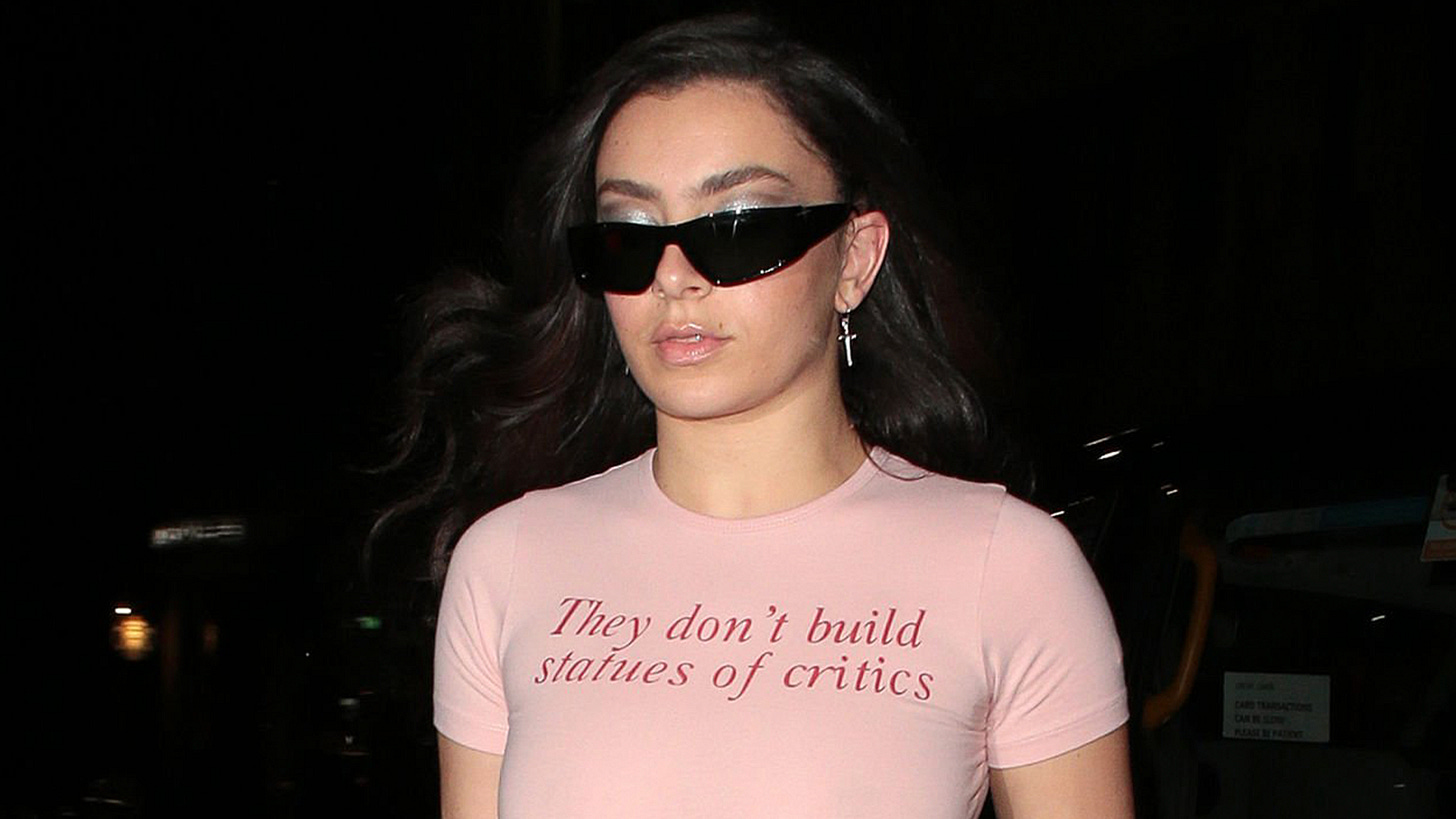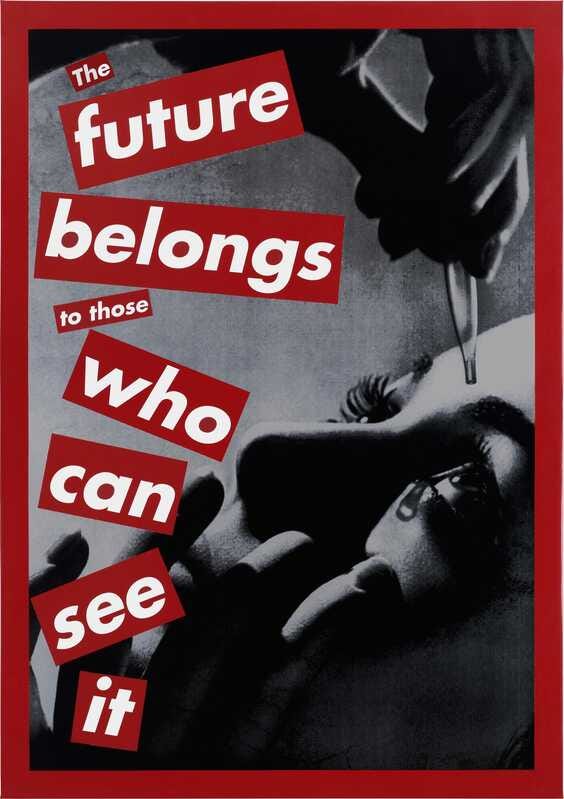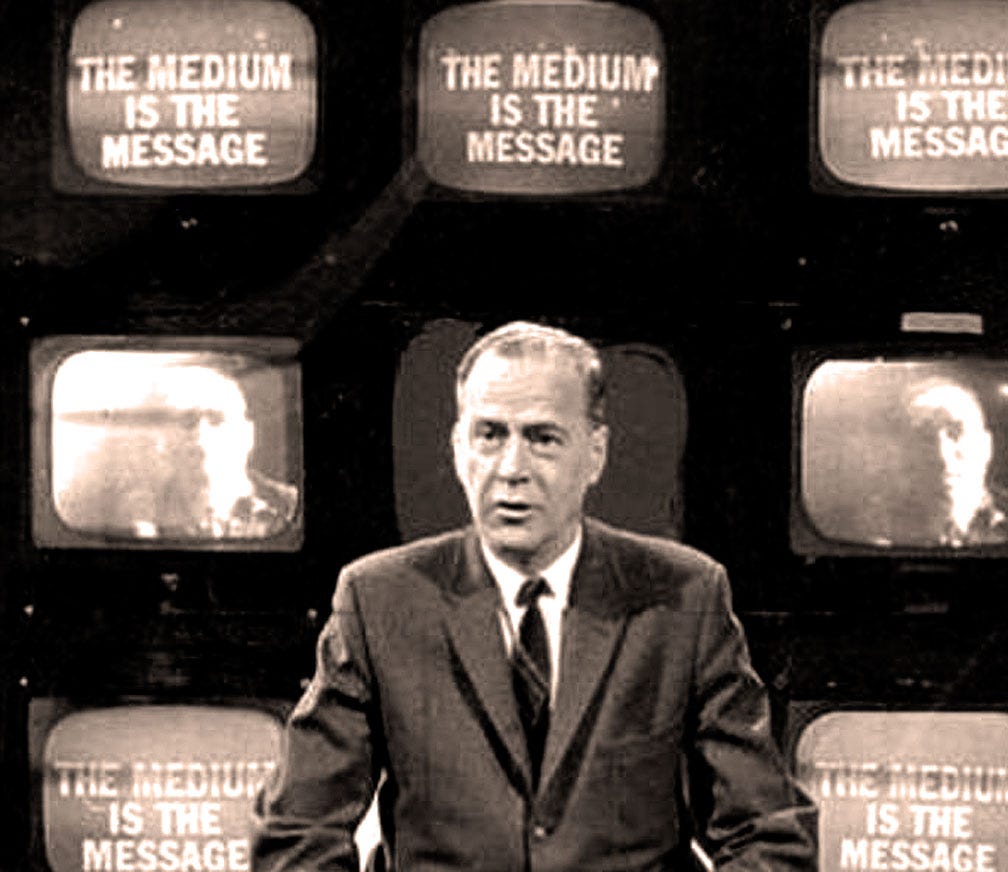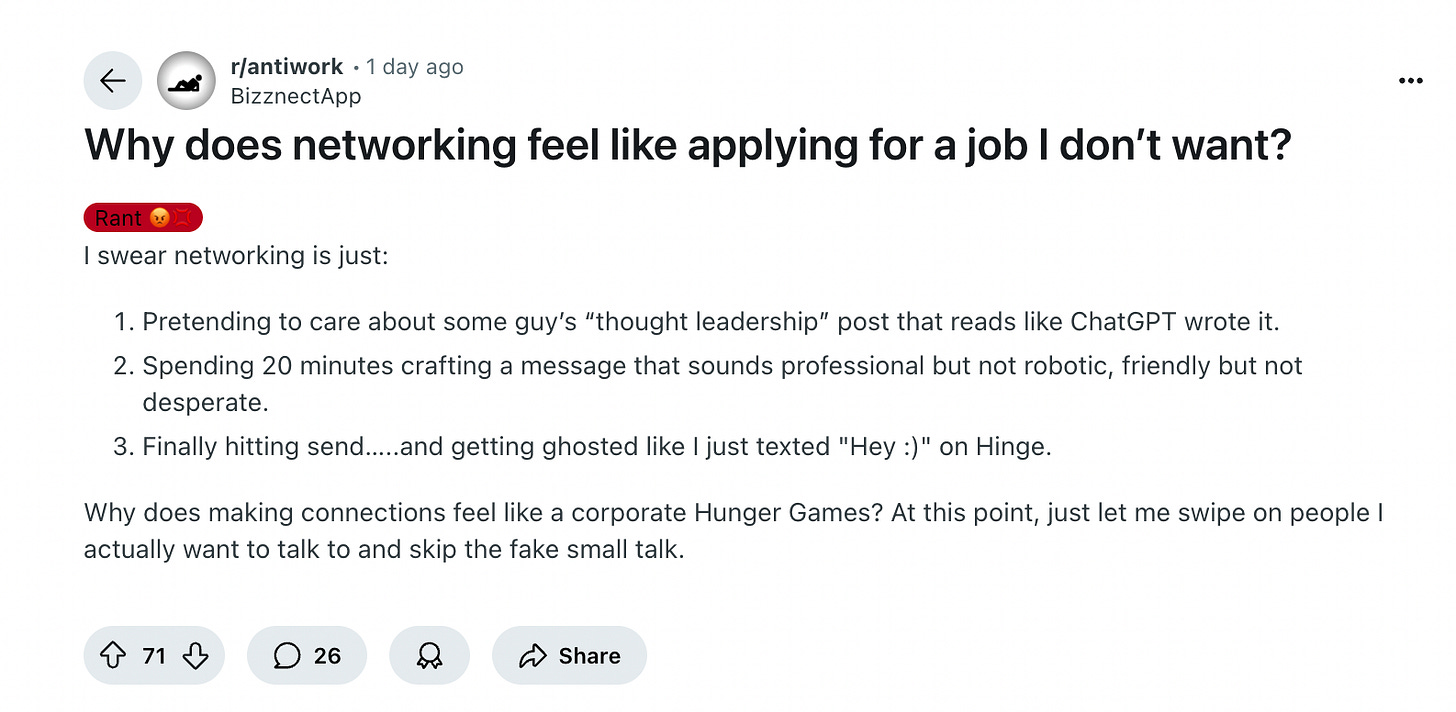Cultural criticism has become a performative identity. Once the domain of academia and journalism, it’s now a currency for digital clout. The question isn’t just why critique thrives online—it’s why it’s been reduced to soundbites, stripped of depth, and optimized for engagement over insight.
This shift stems from a convergence of factors: media fragmentation, political instability, and economic shifts. Whether you blame the media ecosystem, the collapse of the middle class, or the pursuit of personal brand-building, the outcome is the same: anyone with an internet connection can claim the role of cultural theorist. The modern digital oracle doesn’t analyze culture—they manufacture their own relevance, treating critique as branding rather than inquiry.
More crucially, digital criticism turns participants into content creators first and intellectuals second. The pressure to produce, react, and maintain visibility dictates how critique is conducted. Traditional criticism involved research, revision, and discourse; today, the model rewards speed, surface-level engagement, and hot takes. The goal is no longer to challenge dominant narratives but to fit within ideological frameworks that maximize traction within niche online communities.
Critique isn’t just currency in the digital economy—it’s a hustle for those seeking intellectual credibility without the inconvenience of deep thought. The incentive structure of digital platforms rewards speed, virality, and digestibility over substance. This shift turns analysis into a product, shaped by algorithmic pressures rather than intellectual pursuit.
This transformation means that critique is often no longer created for intellectual or artistic exploration but as a means to an end: building personal brands, securing monetization opportunities, and ensuring continued audience growth. The economic viability of critique now depends not on its substance but on its ability to perform well within algorithmic systems. This shift fundamentally alters the nature of critique itself—it turns analysis into a product that must conform to external pressures rather than a pursuit of truth or depth.
Who is the TikTok oracle?
The emergence of the TikTok Oracle is characterized by several key traits:
Brevity over depth – Successful digital critics condense complex ideas into bite-sized, declarative statements, sacrificing depth for brevity.
Performance over exploration – Algorithms favor confident delivery. The more authoritative the tone, the more traction the content gains, regardless of rigor.
Virality over rigor – The objective shifts from thorough analysis to visibility. Thought leadership becomes a branding exercise rather than a pursuit of genuine insight.
While the impulse to make sense of the world is valuable, optimizing critique for attention risks detaching it from the reality it aims to illuminate. Ironically, in dissecting this phenomenon, I too engage in a form of digital critique that can be consumed, shared, and debated in a performative cycle. The difference? I’m not pretending to have all the answers—just pointing out that the internet rewards those who act like they do.
The most dangerous aspect of this dynamic is that it rewards intellectual absolutism. The TikTok Oracle, by necessity, must exude certainty, even on issues too complex for simple conclusions. This breeds an ecosystem where intellectual humility is penalized, and performative confidence trumps genuine inquiry. In such an environment, cultural critique risks becoming just another form of ideological entertainment.
Please note that for this essay, TikTok Oracle is useful shorthand for anyone that is posting thought leadership that is optimized with hooks, taxonomification of things that aren’t “real”, and it all just seems too neatly packaged and marketable, designed to provoke a strong reaction.
How algorithms shape discourse
Algorithms dictate discourse by rewarding emotional reactions over intellectual depth. The result? Performative critique thrives, and nuanced analysis disappears as soon as engagement drops. Cultural critique, once cumulative, is now disposable.
Moreover, algorithmic bias creates a selective intellectual environment where only the most provocative or simplified takes gain traction. The platforms themselves determine what kind of critique thrives, rewarding polarizing content while devaluing analysis that requires sustained engagement. This dynamic makes it difficult for genuine intellectual diversity to flourish, as discourse is increasingly shaped by what is most shareable rather than what is most insightful.
Is digital thought leadership a natural outcome of the media environment? Walter Ong’s work on oral vs. literate cultures suggests that different mediums prioritize different forms of discourse. Oral cultures rely on immediacy, repetition, and performance. Written cultures allow for sustained, complex argumentation.
Social media platforms behave more like oral cultures than written ones—ephemeral, reactive, optimized for recall rather than reasoning. Cultural critique, therefore on these platforms, mirrors this structure: brevity and performance win over depth and complexity. If the medium is built for engagement rather than reflection, can meaningful thought leadership even exist within it?
Encoding/decoding in the age of TikTok
Stuart Hall’s Encoding/Decoding model provides insight into this shift. Originally applied to mass media, Hall argued that meaning is negotiated between creator and audience. This process assumes an audience that actively interprets content rather than merely consuming it. However, in the age of social media, particularly on platforms like TikTok, Twitter, and Instagram, this dynamic has been fundamentally altered. These platforms privilege engagement over reflection, compressing audience responses into binary reactions: like, share, or ignore. Algorithms reward certainty, prioritizing content that provokes immediate emotional responses rather than thoughtful consideration.
Dominant (accepting the intended meaning),
Negotiated (partially accepting but modifying it),
Oppositional (rejecting it entirely).
At first glance, this seems to flatten Hall’s model, reducing audience reception to a frictionless transaction. However, while digital platforms streamline engagement, they also create new participatory behaviors that complicate the encoding/decoding process. Audiences are passive receivers of messages and active co-creators, reshaping discourse through duets, stitches, and comment-section debates. These tools allow for immediate reinterpretation, making the decoding process visible in ways that traditional media never did.
But if creators optimize for engagement, audiences, too, have been conditioned by the platform’s logic. The speed of social media consumption trains audiences to expect critique in digestible, emotionally charged formats. Instead of seeking depth, users participate in discourse through reaction—affirming or rejecting ideas rather than engaging in sustained interpretation. Just as creators are incentivized to distill complexity into certainty, audiences are incentivized to treat critique as entertainment rather than inquiry.
.
A very quick diagram I made in keynote, I’m NOT a designer!!!
This participation does not necessarily lead to deeper discourse. Instead, engagement often becomes reactive rather than reflective. The speed and structure of these platforms encourage rapid responses that prioritize performative engagement—aligning with or rejecting content in ways that are optimized for visibility. Instead of expanding the range of possible meanings, discourse contracts into viral loops, where ideological positioning and clout-chasing often override genuine exploration. The space for ambiguity, contradiction, and layered interpretation—the very elements that make cultural analysis rigorous—is lost to the pressures of algorithmic virality.
What emerges is a new form of encoding/decoding, one shaped as much by platform mechanics as by audience agency. Meaning is not just negotiated between creator and consumer but is actively shaped by the incentives of social media itself. Rather than a participatory culture that deepens understanding, we have one that accelerates interpretation at the expense of complexity, where discourse is less about discovery and more about domination.
Trust and the authority of the Oracle
In his seminal work, Amusing Ourselves to Death, Postman argued that television, as a medium reliant on alluring visual imagery, transforms serious discourse into entertainment, thereby diminishing the quality of public dialogue. He contended that television inherently favors style over substance, leading to a culture more concerned with amusement than critical engagement. This shift results in a populace more focused on entertainment than substantive discourse.
Applying Postman’s critique to today’s digital platforms, we observe a similar trend. TikTok’s format, emphasizing short, visually engaging content, encourages creators to prioritize entertainment value over depth. The print era tied authority to expertise and institutional backing. Television shifted credibility toward charisma and visual presentation. Social media has rewritten the rules again: trust is no longer about expertise, but about performance. This environment fosters the rise of the TikTok Oracle, where complex cultural critiques are distilled into easily consumable snippets, aligning with Postman’s concerns about the trivialization of discourse.
Barbara Kruger (1977) – could easily say ‘the future belongs to those who can post it’
The situation is even more extreme than Postman could have envisioned. Unlike television, where the audience still had to actively choose between channels, modern algorithmic feeds eliminate even this minimal friction. The result is an environment where critique is not only made more entertaining but is completely dictated by what will generate the most engagement in a given moment. This means that the way ideas gain traction is fundamentally different from traditional intellectual discourse—it is driven by platform mechanics rather than intellectual merit. The question is no longer "What is the most insightful analysis?" but "What will get the most people to stop scrolling?"
A digital thought leader’s credibility is often self-generated—if an idea circulates widely enough, it takes on the appearance of truth. The algorithm doesn’t care if something is accurate; it cares if it’s engaging. Certainty is more valuable than nuance. And while Postman could see television turning discourse into entertainment, even he couldn’t have predicted a world where ideas compete on a frictionless, algorithmic battlefield where attention, not merit, dictates what survives.
The digital audience is not just a passive consumer but an active participant in constructing authority. Virality is a feedback loop—an idea doesn’t just gain traction because it’s well-articulated, but because audiences validate it through engagement. Those who confirm pre-existing narratives, whether ideological or aesthetic, are amplified, while those who resist easy categorization often fade into the algorithmic void. The Oracle exists because the audience wants an Oracle.
However, the digital economy did not create the phenomenon of performative authority—it simply accelerated it. Intellectual credibility has always been mediated through cultural forms. Whereas intellectual authority once took decades to solidify, today’s TikTok Oracle can manufacture influence overnight. The question is not whether digital credibility is real, but whether it is durable beyond the engagement cycle.
The Medium, the Message, the Market
Marshall McLuhan’s famous aphorism, “the medium is the message,” suggests that the characteristics of a medium, rather than the content it conveys, have the most significant impact on society. He argued that each medium shapes human experience and societal structures in distinct ways, independent of the specific messages transmitted.
In the context of TikTok (or insert short-form video platform here), the platform’s design—favoring brevity, rapid consumption, and algorithm-driven content discovery—does more than shape how information is presented. It dictates how users process and value that information. The medium’s constraints encourage simplification and sensationalism, influencing both the creation and reception of cultural criticism. Posting a strong take online provides a false sense of control in a chaotic world. McLuhan argued that media is not just about the content it carries, but about what it enables us to do. TikTok enables us to say things, but does it enable us to change things?
This raises a more unsettling conclusion: digital critics are not just shaped by the platforms they use—they are also absorbed into the systems those platforms sustain. The digital critic of today is fundamentally different from the public intellectual of the past. Where intellectualism once sought to expose and undermine power, TikTok’s algorithmic incentives align critique with virality, engagement, and ultimately, monetization. What passes as cultural criticism is often indistinguishable from content marketing, optimized for visibility rather than disruption. The belief that critique equals impact is flawed. Declaring a stance feels like action, but often, it’s just participation in the content economy.
More than just flattening discourse, TikTok’s structure ensures that critique itself becomes a tool of capital. The very mechanics that drive engagement—emotive language, stark binaries, and digestible narratives—also make criticism legible to brands, which eagerly align themselves with the voices that generate the most attention. Far from challenging power, the TikTok oracle works to sustain it, offering neatly packaged critiques that reinforce, rather than threaten, the economic structures that govern these platforms. In this sense, the platform doesn’t just shape intellectual discourse—it commercializes and neutralizes it.
Thought leadership as a symptom of a diseased economy
The rise of performative thought leadership is not just a media phenomenon—it is a response to a broken labor market. The gig economy, corporate precarity, and the increasing difficulty of securing stable employment have forced individuals to become personal brands. In this climate, being seen as an authoritative thinker—regardless of actual expertise—becomes a career survival strategy. Digital thought leadership, then, is not just a cultural quirk; it is a symptom of an economy that demands constant self-promotion in lieu of stable professional pathways.
The job market now values visibility as much as skill. Workers must market themselves as much as they refine their craft. This shift dilutes expertise, rewarding those who brand themselves well rather than those with the most substantive contributions. The intellectual economy has become one of survivalism, where attention matters as much as thought.
A post from r/antiwork
This transformation has created an existential dilemma for workers in intellectual fields. Instead of dedicating themselves fully to their craft, they must navigate an economic structure that demands they also be entrepreneurs of the self. The intellectual economy has become one of survivalism, where one's ability to generate attention is as critical as their ability to think. This leads to a dilution of expertise, as the pursuit of visibility can reward those who are best at branding themselves rather than those who have the most to contribute to a given field.
Creating more meaningful thought leadership
If critique is to be meaningful, it must resist the forces that push it toward commodification. The challenge is to create spaces for deep, reflective engagement rather than reactive content cycles. Thought leadership must shift from performance to practice—grounding ideas in action, engagement, and a willingness to embrace complexity rather than certainty.
Rather than prioritizing recognition, thought leadership should focus on genuine impact. The most valuable insights emerge from long-term observation, research, and sustained intellectual investment. The goal should be to add to the cultural discourse in ways that endure beyond the next news cycle.
Prioritize depth over performance
Instead of chasing virality, focus on depth. A proficient strategist doesn't merely offer hot takes; they develop frameworks that enable others to view problems from new perspectives.
Engage in dialogue, not display
The most impactful critics interact with culture rather than merely showcasing their expertise. Thought leadership should be conversational, not just a monologue. Reference sources, cite history, and invite debate.
Recognize the limits of the Medium
If social media is structurally optimized for performance over depth, consider alternative mediums for more substantive discourse. Not every thought belongs in a short-form video; some ideas require essays, books, or long-form discussions to fully develop.
Shifting focus from visibility to value, from spectacle to scholarship, thought leadership can transcend the pitfalls of performative critique. The future of meaningful cultural analysis depends not on who speaks the loudest, but on who is willing to do the work to uncover deeper truths.
Beyond the soundbite
The dominance of digital thought leadership has blurred the lines between critique, performance, and entertainment. We live in a media environment where authority is self-generated, certainty is currency, and engagement often trumps accuracy. But critique should be more than just another form of content—it should be a process of understanding, a tool for navigating complexity rather than reducing it.
If we want to elevate cultural discourse beyond the algorithmic loop of reaction and counterreaction, we need to commit to depth, dialogue, and the harder task of shaping ideas that endure beyond a fleeting viral moment. Real thought leadership doesn’t just generate takes; it creates frameworks that outlast the speed of the feed. This means resisting the pressure to engage in content cycles that reward repetition over rigor. It means recognizing when a platform is limiting the scope of a discussion rather than expanding it. It means not just consuming and producing critique, but asking whether the medium itself is capable of sustaining real intellectual engagement.
If the role of the critic has shifted, so has the role of the audience. Where past intellectual engagement required effort—reading, debating, and revisiting ideas—digital platforms train audiences to skim, react, and move on. The depth of discourse is not just shaped by what creators produce but by what audiences demand. If the most rewarding engagement is the quickest, the easiest, and the most emotionally affirming, then even well-intentioned critique is pressured to conform to those constraints. The question is not just whether creators can resist these forces, but whether audiences even want them to.
But is this cycle reversible? Or is the rise of the TikTok Oracle an inevitable feature of digital media? The historical shift in authority—from the slow accrual of expertise in print cultures to the instant credibility of digital virality—suggests that we may not return to a world where depth is the dominant currency. However, meaningful critique has never been about reaching mass audiences overnight. The challenge is not to dismantle digital thought leadership but to reshape it—to build spaces where complexity is valued, where ideas are allowed to evolve over time, and where critique serves as a bridge to deeper understanding rather than a fleeting performance of expertise. Let’s become comfortable with inquiry instead of certainty.
The difference between commentary and leadership isn’t reach. It’s depth.
thank you to the extended brain trust for the chats, proofreading, and feedback that ultimately led to this piece: , , , , , , , + of course,











"The job market now values visibility as much as skill. Workers must market themselves as much as they refine their craft. This shift dilutes expertise, rewarding those who brand themselves well rather than those with the most substantive contributions. The intellectual economy has become one of survivalism, where attention matters as much as thought."
I feel this so deeply! It's no longer enough to work hard on building relationships at work, with clients and building meaningful brands - we have to be yelling from the rooftops constant takes on the latest brand news, cultural trends and the like. It's exhausting! I've been told in a past job I wouldn't get a promotion until I was more engaged in thought leadership and getting my voice out there which felt like I was being forced into being a LinkedIn warrior
Great article. What else is negative about TikTok content mainly in fashion is that writers, academics, critics, or journalist cannot research and write a depth piece about the current fashion trends anymore. Once they write or put an idea together about the latest trend out becomes a new trend or the trend is out of fashion in social media terms. We do not get in depth conversations about it because you cannot have conversation about fashion trends in a one-minute video.